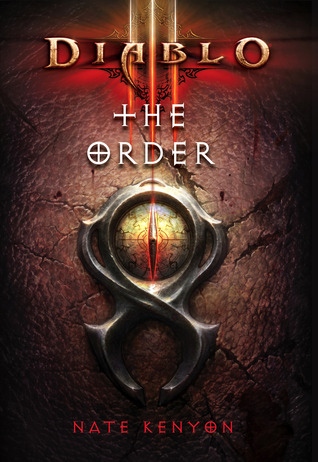As many of you know from my occasional Books That Should Be Games posts, I’m an avid gamer when I’m not working, gardening, or reading. Thanks to the modern phenomenon of multimedia franchise building I sometimes get to combine reading and gaming by way of novels written in the universes of video games I love. My most recent foray into this realm was “Diablo: The Order” by Nate Kenyon.
For those unfamiliar with the franchise, Diablo is a series of games from Blizzard Entertainment wherein you control a hero in isometric perspective who must face down a horde of demonic and undead beasts in order to defeat Diablo, the Lord of Terror. The gameplay is simple and formulaic and the storylines aren’t terribly complex either, but the universe is a colorful and interesting tapestry that’s a great deal of fun to explore.
Throughout the three Diablo games, there is one character you meet repeatedly at critical moments; the wise old sage named Deckard Cain. In the original Diablo, he serves the role of the town schoolmaster in Tristram, identifying magic items and humbly offering advice that seems to suggest he may know more about the darkness that has ensnared the town than he cares to admit. In the second game, Deckard is rescued by the hero from the fiery remains of Tristram in order to provide insight and guidance along the journey.
In the most recent installment, the character learns that Deckard has adopted a charge, the young woman Leah, raising her from a child as he wandered the world searching for the information that would help him complete an ancient prophecy about the end of the world. “Diablo: The Order” is the story of how they came to be together.
The thing about video game books is that they tend to run hot or cold. Some of them are really great and tell an amazing story that satisfies while also building on the universe you’ve come to love. Others just seem very unnecessary. Thankfully, “Diablo: The Order” falls into the former category.
The story is fairly standard fare for the Diablo universe but has some interesting intrigue thrown in to keep you guessing about where certain pieces of information came from. A madman discovers texts of the old Horadrim (an order of mages founded by an archangel to slay the big boss demons) but interprets them wrong and is twisted toward evil. He enacts a plan to bring about the end of the world by summoning and becoming the vessel for Belial, Lord of Lies. Deckard, Leah and a monk named Mikulov are drawn into a quest to stop him.
Where this book really shines is the characterization of Deckard Cain. You get a much deeper look into Cain’s backstory and personality than you get in the games alone, and yet everything fits with what we know of him in the games. Kenyon does a great job with Cain’s dialogue. As you read the book, every line of his sounds comfortable in that familiar gravelly lilt we’ve come to know and love, while never becoming monotonous and keeping the necessary emotion and diction.
For those who are not fans or simply unfamiliar with the Diablo franchise, the book may be somewhat more difficult to get into. Still, I think fantasy fans, in general, can find a lot to love in this title and it’s a recommended read for those looking for a fast and action-packed fantasy adventure. I give it 4 out of 5 stars (check out my rating system for a clearer definition of what that means).


